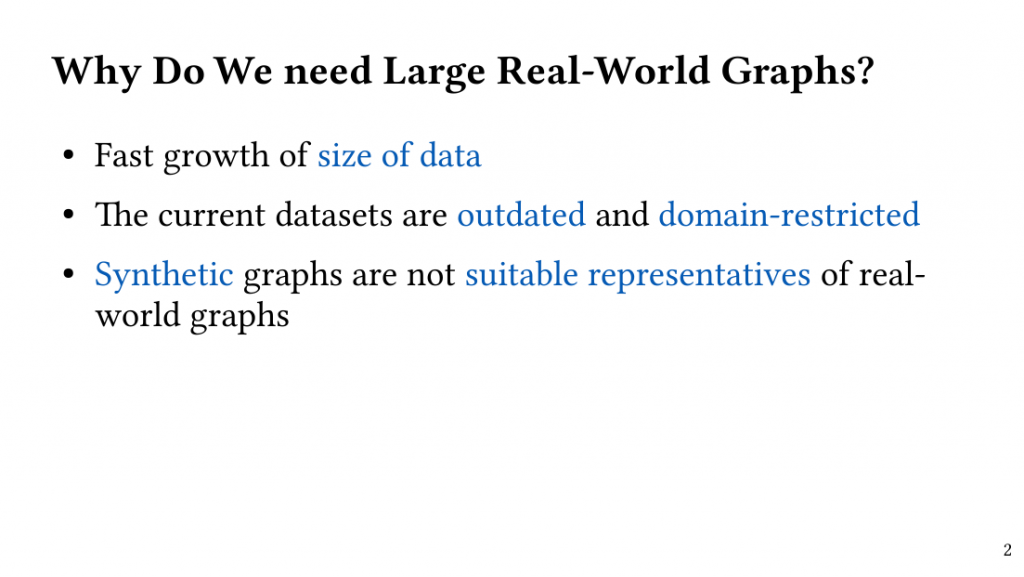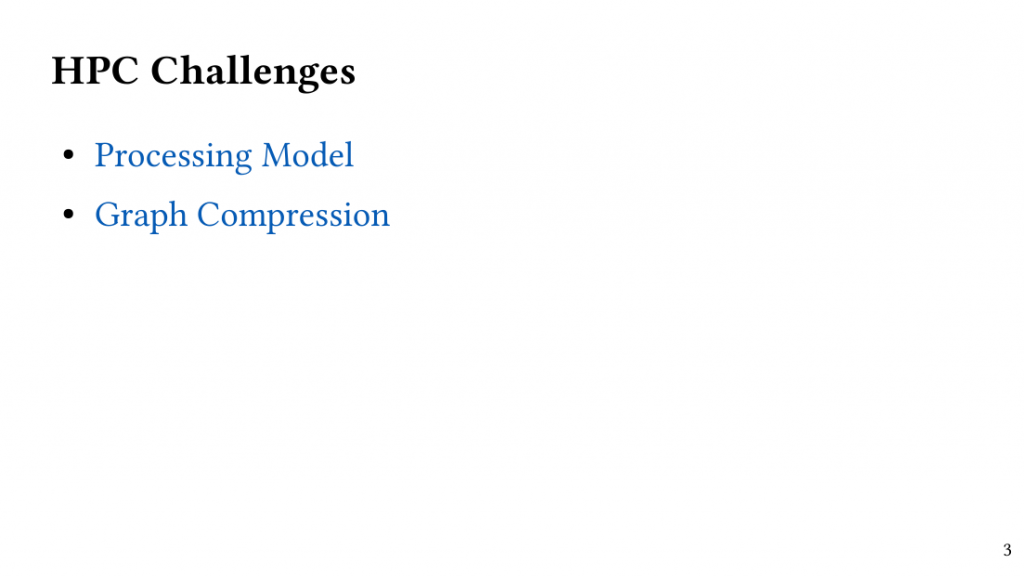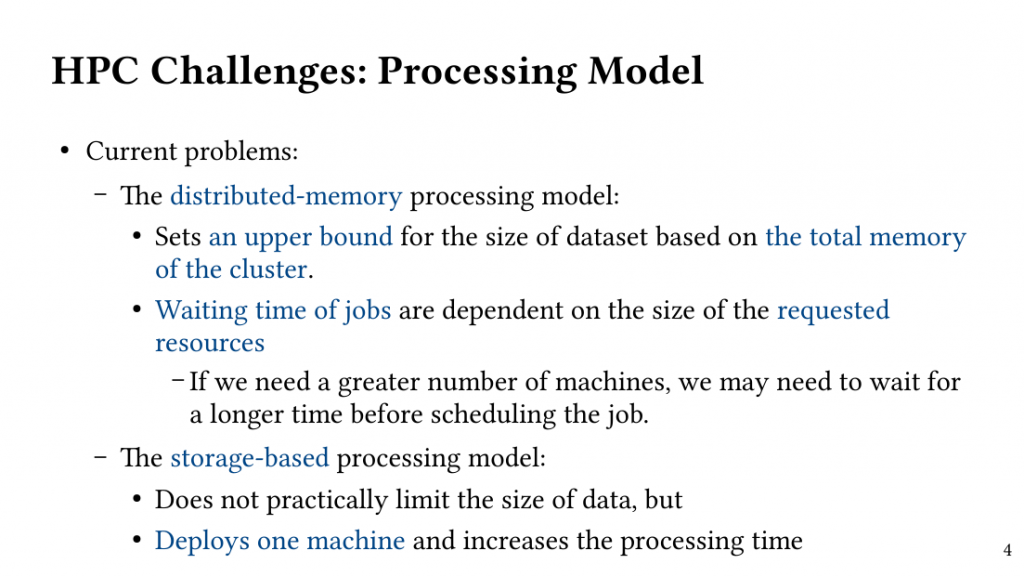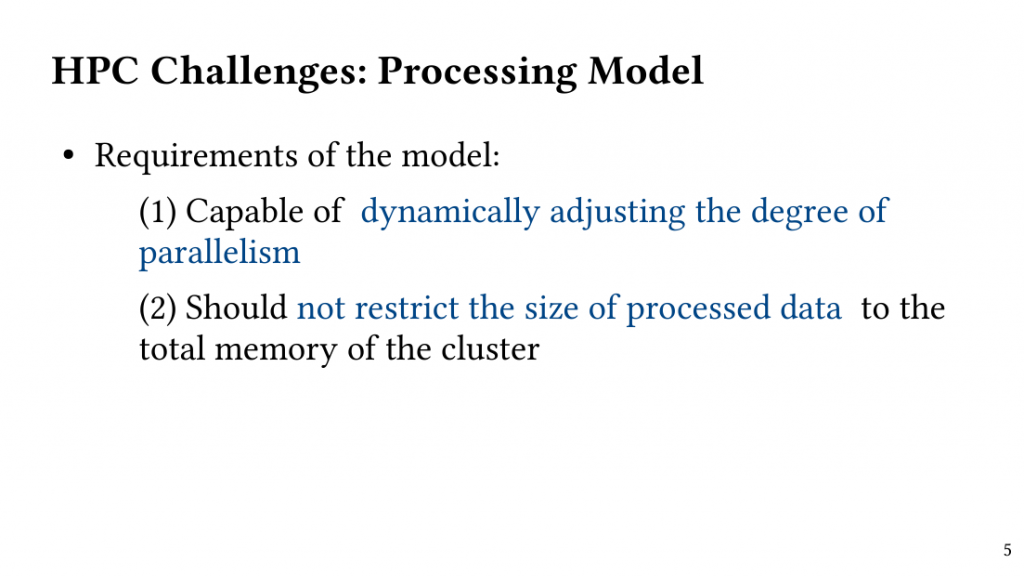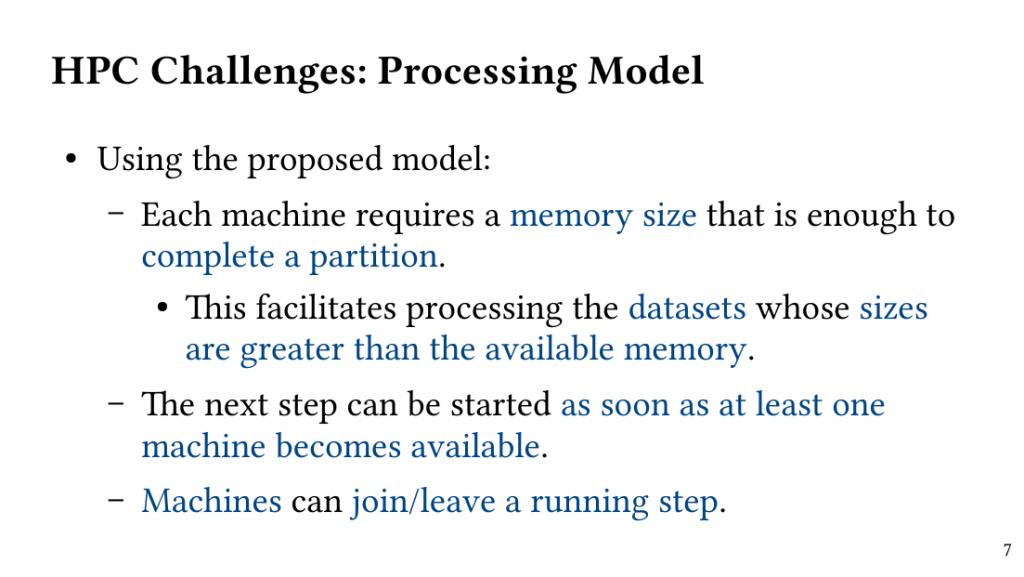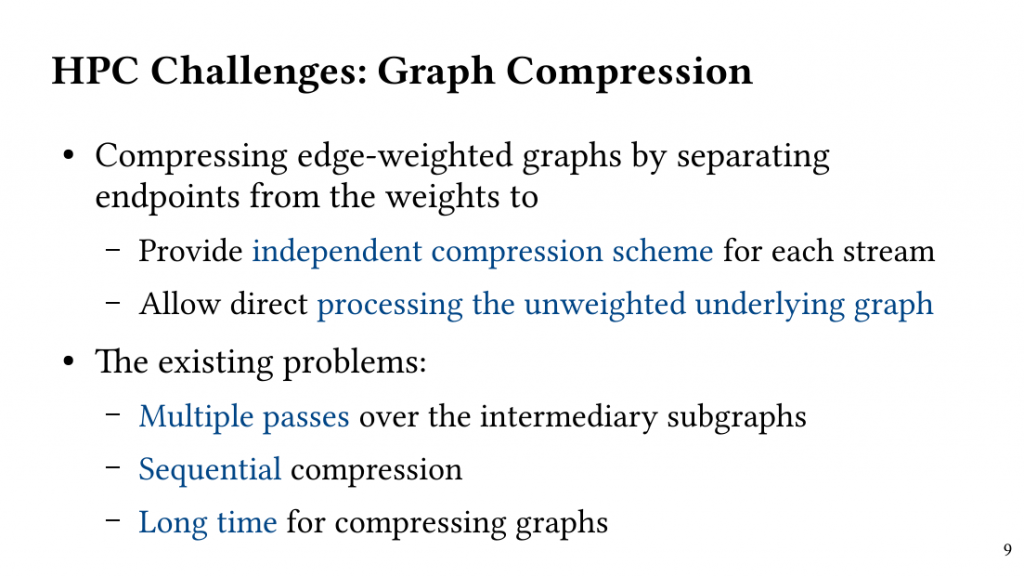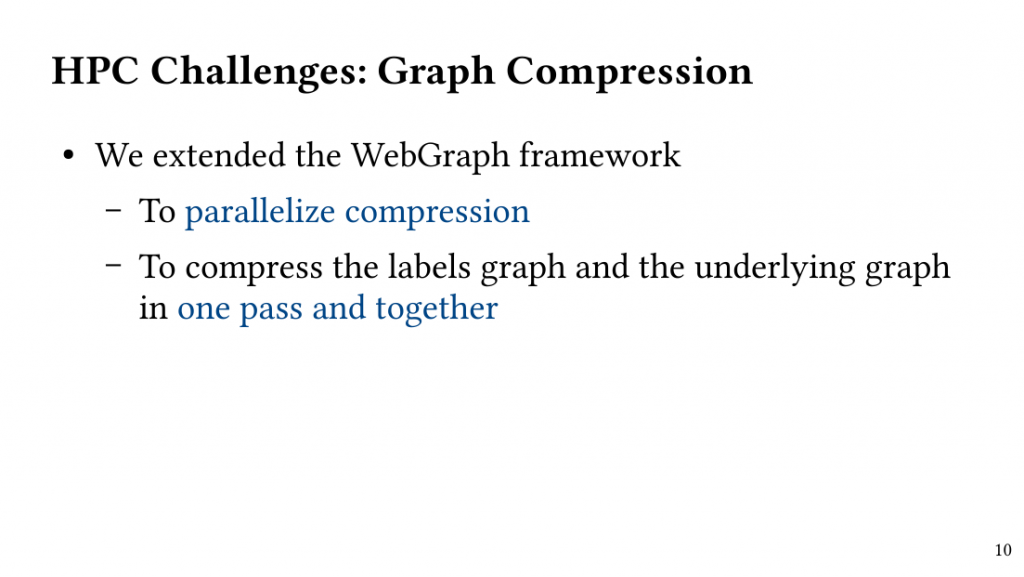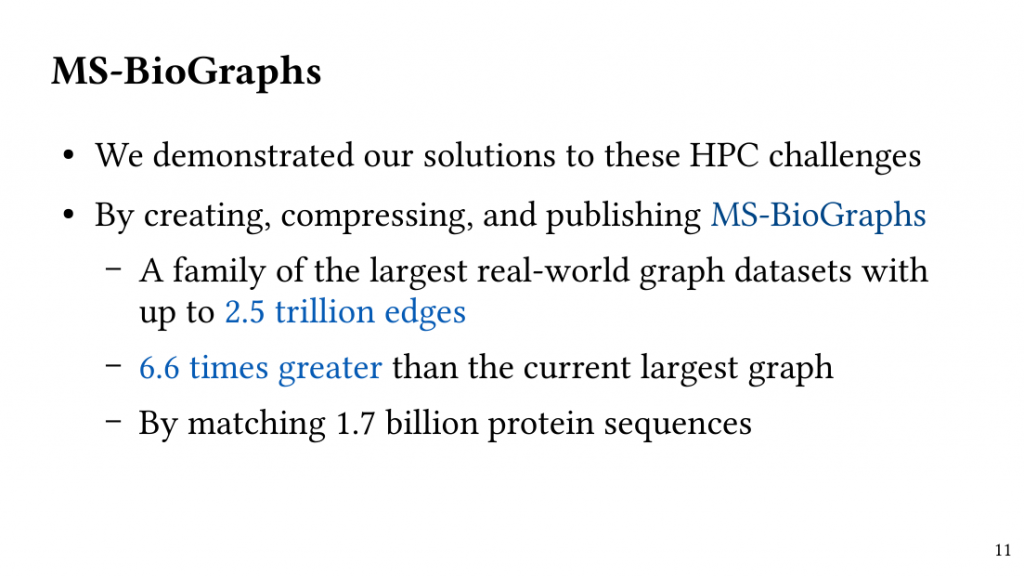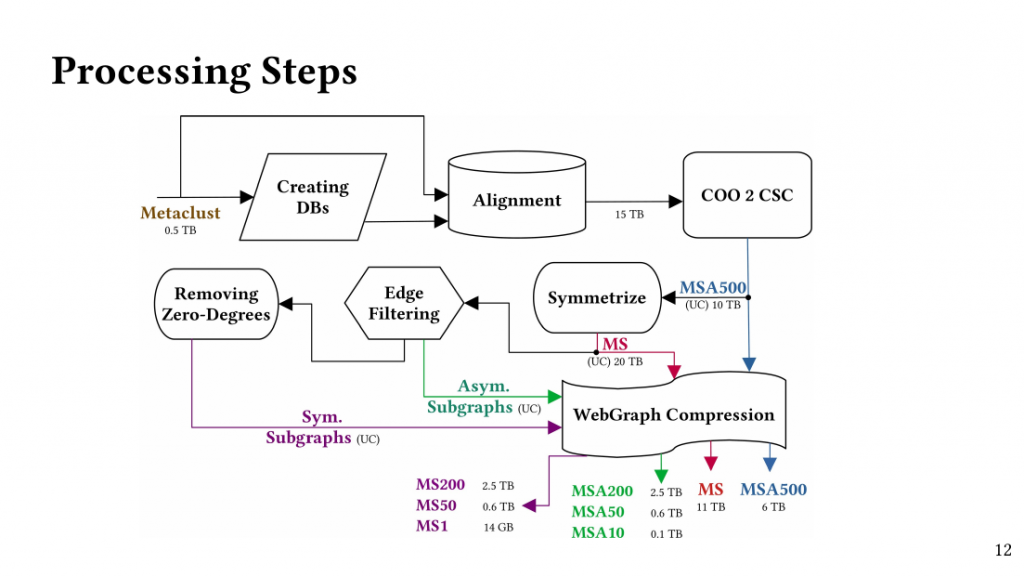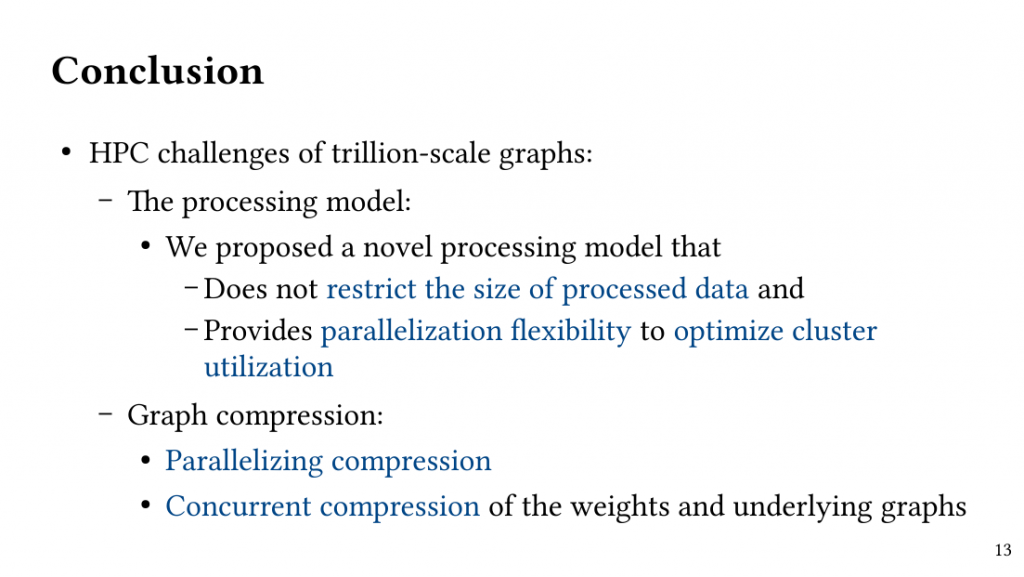2023 IEEE International Conference on Big Data (BigData’23)
December 15-18, 2023, Sorrento, Italia
DOI: 10.1109/BigData59044.2023.10386309
PDF (Authors Copy)
Progress in High-Performance Computing in general, and High-Performance Graph Processing in particular, is highly dependent on the availability of publicly-accessible, relevant, and realistic data sets.
To ensure continuation of this progress, we (i) investigate and optimize the process of generating large sequence similarity graphs as an HPC challenge and (ii) demonstrate this process in creating MS-BioGraphs, a new family of publicly available real-world edge-weighted graph datasets with up to 2.5 trillion edges, that is, 6.6 times greater than the largest graph published recently. The largest graph is created by matching (i.e., all-to-all similarity aligning) 1.7 billion protein sequences. The MS-BioGraphs family includes also seven subgraphs with different sizes and direction types.
We describe two main challenges we faced in generating large graph datasets and our solutions, that are, (i) optimizing data structures and algorithms for this multi-step process and (ii) WebGraph parallel compression technique.
The datasets are available online on https://blogs.qub.ac.uk/DIPSA/MS-BioGraphs.
BibTex
@INPROCEEDINGS{10.1109/BigData59044.2023.10386309,
author = {Koohi Esfahani, Mohsen and Boldi, Paolo and Vandierendonck, Hans and Kilpatrick, Peter and Vigna, Sebastiano},
booktitle={2023 IEEE International Conference on Big Data (BigData'23)},
title={On Overcoming {HPC} Challenges of Trillion-Scale Real-World Graph Datasets},
year={2023},
volume={},
number={},
pages={},
location={Italia, Sorrento},
publisher={IEEE Computer Society},
doi={10.1109/BigData59044.2023.10386309}
}MS-BioGraphs
Related Posts
- MS-BioGraphs on IEEE DataPort

- ParaGrapher Source Code For WebGraph Types

- On Overcoming HPC Challenges of Trillion-Scale Real-World Graph Datasets – BigData’23 (Short Paper)

- Dataset Announcement: MS-BioGraphs, Trillion-Scale Public Real-World Sequence Similarity Graphs – IISWC’23 (Poster)

- MS-BioGraphs: Sequence Similarity Graph Datasets

- MS-BioGraphs MS

- MS-BioGraphs MSA500

- MS-BioGraphs MS200

- MS-BioGraphs MSA200

- MS-BioGraphs MS50

- MS-BioGraphs MSA50

- MS-BioGraphs MSA10

- MS-BioGraphs MS1

- MS-BioGraphs Validation



